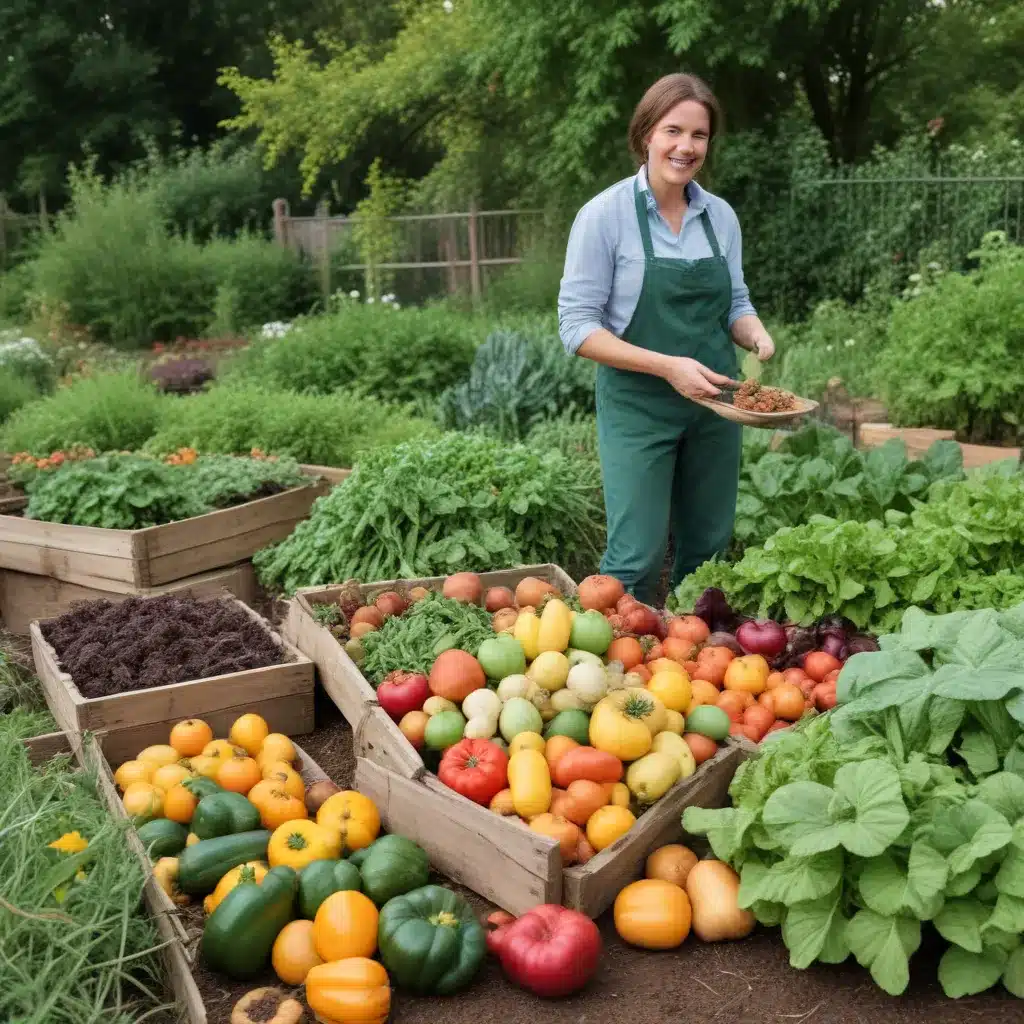
In a world of mass-produced, uniform produce, the rise of heirloom vegetables offers a refreshing alternative. These living relics, passed down through generations, represent a unique tapestry of flavors, colors, and cultural histories. As a farm educator at Crooked Pines, I’m thrilled to share the joys and benefits of cultivating an heirloom vegetable garden.
Defining Heirloom Vegetables
Heirloom vegetables are open-pollinated cultivars that have been lovingly maintained and passed down within families or communities for at least 50 years. Unlike modern hybrids, heirlooms are prized for their distinct characteristics, often including unusual shapes, vibrant hues, and exceptional flavors. What sets them apart is their deep historical significance, as many heirloom varieties trace their roots to pre-industrial agriculture, reflecting the rich diversity of our shared culinary past.
The diversity of heirloom produce is truly astounding. From the Cherokee Purple tomato, with its dusky, almost black skin, to the delicate, lacy leaves of Ragged Jack kale, each variety tells a story. Some heirlooms, like the Oaxacan Green corn, are strongly tied to the culinary traditions of specific cultural groups, preserving centuries-old agricultural practices. Others, such as the Mortgage Lifter beefsteak tomato, gained popularity during the Great Depression, when their robust yields and resilience helped families weather economic hardship.
Choosing Heirloom Cultivars
When selecting heirloom varieties for your garden, consider factors like flavor profiles, visual appeal, and adaptability to your local climate. Seek out cultivars with stories that resonate with you and your community. Perhaps you’re drawn to the vibrant purple streaks of the Chioggia beet or the delicate, lacy leaves of Mesclun salad greens.
Sourcing heirloom seeds can be a delightful treasure hunt. Reach out to local seed exchanges, community gardens, or specialized online retailers to access a wealth of rare and unique varieties. Be mindful of seed saving practices, as preserving the genetic lineage of heirlooms is crucial to maintaining their diversity.
As you plan your heirloom garden, research which cultivars will thrive in your specific growing conditions. Consider factors like soil type, sunlight exposure, and microclimate to ensure your plants reach their full potential. By choosing varieties well-suited to your environment, you’ll not only enjoy bountiful harvests but also contribute to the preservation of these irreplaceable genetic resources.
Establishing an Heirloom Garden
When setting up your heirloom vegetable garden, start by assessing your site’s soil quality. Incorporate organic matter, such as compost or well-aged manure, to enrich the soil and provide a nutrient-dense foundation for your plants. Ensure your garden receives adequate sunlight, as most heirloom vegetables require at least six hours of direct sunlight per day.
Consider implementing raised beds or intensive planting techniques to make the most of your available space. These methods can maximize your garden’s productivity while reducing the need for water and soil amendments. Be mindful of companion planting, strategically grouping plants that support each other’s growth and deter pests.
Maintaining an heirloom garden requires a bit more attention than a conventional one, but the rewards are well worth the effort. Incorporate organic pest control methods, such as beneficial insects, row covers, and hand-picking problematic pests. Carefully monitor your plants’ watering needs, adjusting as necessary to prevent over- or under-watering.
Preserving Genetic Diversity
One of the most rewarding aspects of growing heirloom vegetables is the opportunity to participate in seed saving. By carefully harvesting, cleaning, and storing the seeds from your heirloom plants, you can ensure the survival of these precious genetic lineages.
When saving seeds, it’s crucial to maintain isolation between different cultivars to prevent cross-pollination. This can be achieved by staggering plantings, using physical barriers, or choosing varieties with different maturity dates. Properly drying, cleaning, and storing your saved seeds in a cool, dry place will help preserve their viability for future seasons.
Beyond individual seed saving, consider connecting with heirloom seed exchanges or community-based initiatives dedicated to preserving genetic diversity. These networks provide a platform for sharing, trading, and learning about rare and unique cultivars, ensuring that these treasures continue to enrich our gardens and tables.
Culinary Appreciation of Heirlooms
The true magic of heirloom vegetables lies in their exceptional flavor profiles. Each variety offers a unique taste experience, often far surpassing the standardized flavors of modern hybrids. Explore the earthy sweetness of Purple Majesty potatoes, the tangy acidity of Green Zebra tomatoes, or the delicate, almost nutty essence of Romanesco broccoli.
When preparing heirloom produce, embrace simple, farm-to-table culinary techniques that allow their inherent flavors to shine. Roast, sauté, or steam heirloom vegetables, showcasing their vibrant colors and intriguing textures. Incorporate them into your favorite recipes, or experiment with traditional dishes that celebrate local food traditions.
Sharing your heirloom bounty with family and friends is a wonderful way to raise awareness and appreciation for these living links to our agricultural past. Participate in farmers’ markets, community-supported agriculture (CSA) programs, or host culinary workshops that introduce others to the joys of heirloom produce. By celebrating the unique characteristics and rich histories of these remarkable vegetables, you can inspire a newfound connection to the land and the diverse tapestry of our culinary heritage.
At Crooked Pines Farm, we believe that cultivating an heirloom vegetable garden is not just a gardening practice but a profound act of preservation. By growing and sharing these remarkable cultivars, we honor the legacies of those who have come before us and ensure that the diversity and flavor of our food system continues to thrive. So, let’s dig in, explore the incredible world of heirloom produce, and cultivate a future where every carrot, tomato, or kale leaf awakens our senses and our appreciation for the richness of our shared agricultural past.


